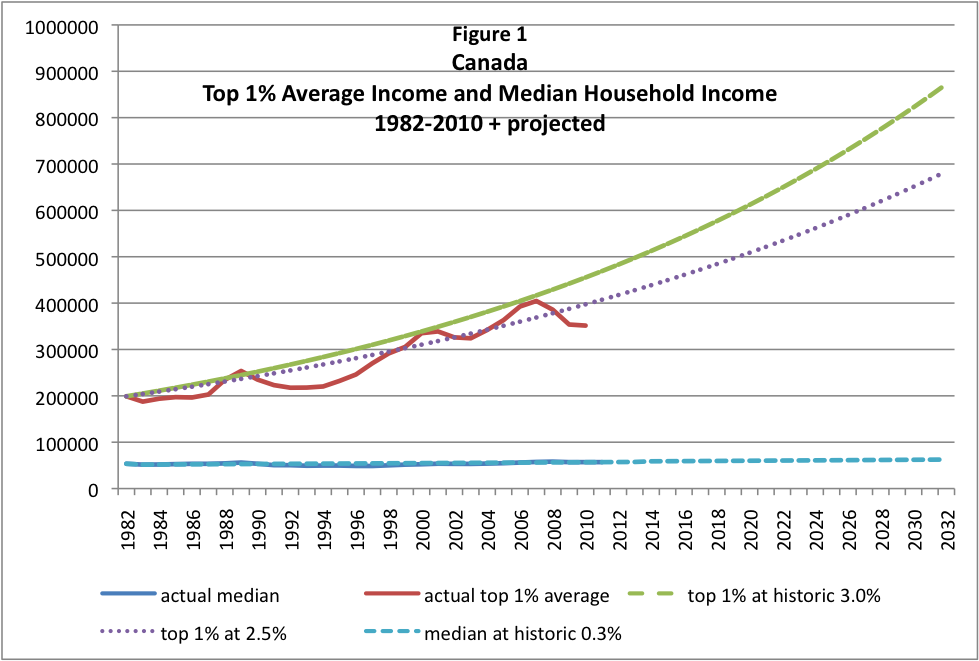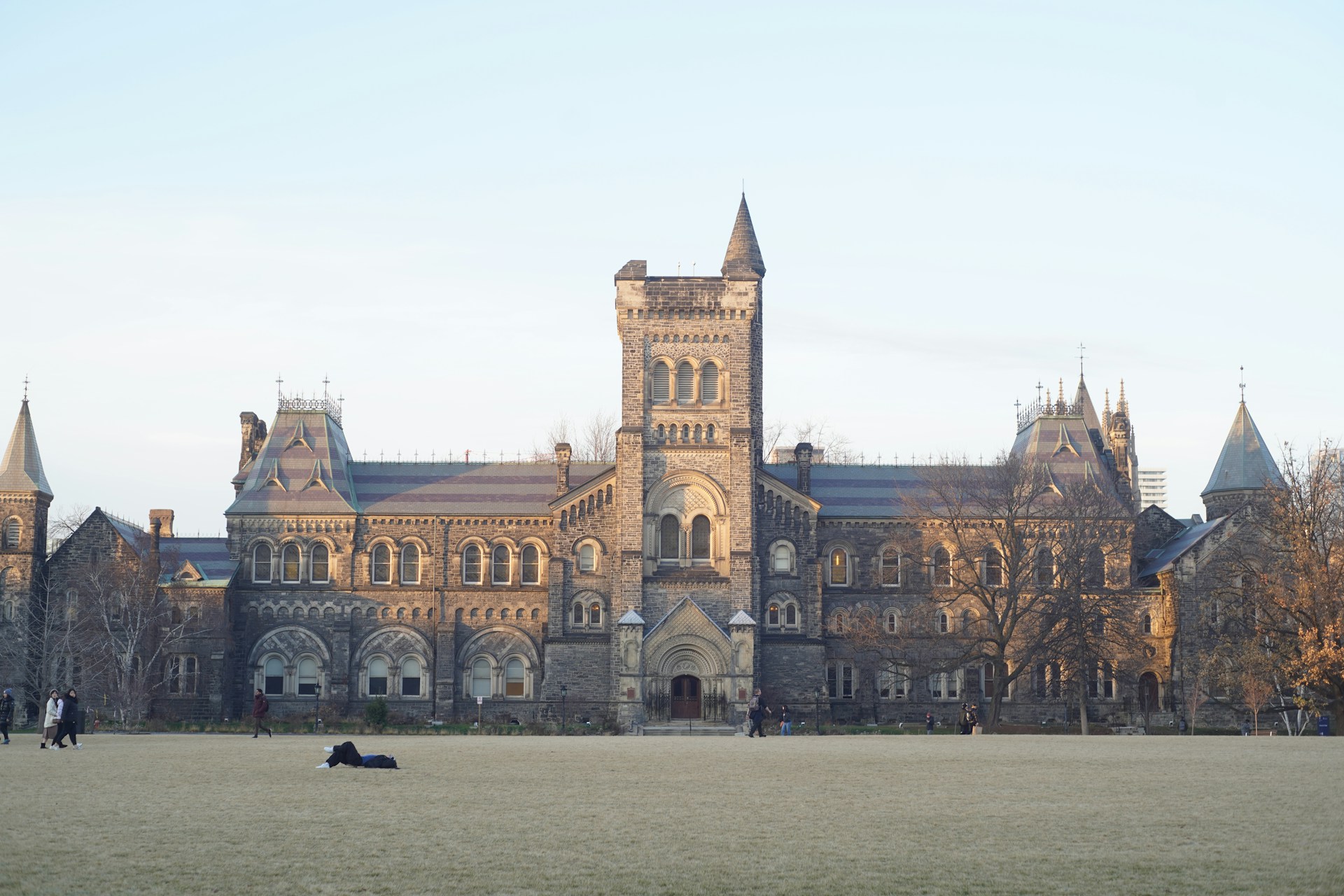Since the early 1980s, middle class incomes in Canada and the United States have stagnated while the incomes of the top 1% have, with occasional short interruptions, grown dramatically. As a result, the top 1% income share in the U.S. increased from 10.8% of total income in 1982 to 22.5% in 2012. Tax data in Canada show a smaller increase, but it is hard to be completely sure since the top 1% in Canada have been able to shelter some of their income increase from view (in Canadian Controlled Private Corporations).
Nevertheless, as Figure 1 illustrates, should the growth rates of the past 30 years continue into the future, the average income of the top 1% will, with compounding growth, increase to ever-higher levels, while the income of households in the middle of the income distribution will hardly budge. Hence, both countries face the problem that the end result will be an ever greater widening of the income gap.
Can an expansion of education increase middle class incomes and thereby solve the problem of an ever growing gap between the top 1% and everyone else?

There are many ‘non-economic’ reasons to be in favour of improved education – not least of which is the impact of education on quality of life. But even if improving educational attainment reduced inequality of opportunity between the disadvantaged and the middle class and reduced wage differences within the middle class (e.g. the university/high school average wage ratio), this does not directly imply better fortunes for the rate of average income growth of the bottom 99%.
If educational quality is to retain its meaning, one has to face the fact that increasing enrolment in advanced education has inherent limits. The gains from any enrolment increases will be the gains of those who are now at the margin. In Canada, the fact that 56% of the 25-34 age cohort already have a post-secondary education implies that further expansion of enrolment will happen in the lower tail of the IQ distribution. Diminishing marginal returns have to be expected – which implies this increase will produce smaller gains than previous expansions.
Moreover, initiatives to improve the quality of education inherently operate with long time lags. Even an all-powerful leader with a magic wand who could instantaneously and totally revolutionise primary and secondary education in 2015 would have to wait 12 years to see, in 2027, the full impact of this policy on high school graduates.
To improve education over current levels, some post-secondary education would then be needed, pushing graduation back to 2031 or later – by which time the income gaps depicted in Figure 1 would already have fully emerged. Even then, the impacts would initially be small, because the flow of new graduates entering the workforce each year is only about 1/40th of the workforce, and the impact on average labour force skills is the differential between the skills of entering and retiring cohorts. It would be roughly another twenty years before new entrants were the majority of workers (i.e. around 2051, or about 36 years after the change).
Furthermore, since most people have completed their education by their mid-twenties, a policy focus on “solving” the inequality problem by improving education essentially means writing off older generations, or ignoring the ever-increasing inequality among anyone now over 30 – which is most of the population.
Canada’s experiences already offer a guide to whether an expansion of education can really be expected to solve the inequality problem. For the age group 25-64, Canada’s post-secondary education attainment level (51% in 2010) substantially exceeds that of the United States (42%) and is in fact the highest in the OECD. Canada’s investment in education has been a “good thing” for many other reasons, but it has not prevented the stagnation of middle class household incomes in Canada and has not solved the problem of ever-growing income gaps.
“Better education” is a good thing – just don’t expect it to solve the problem of rising income inequality anytime soon.





